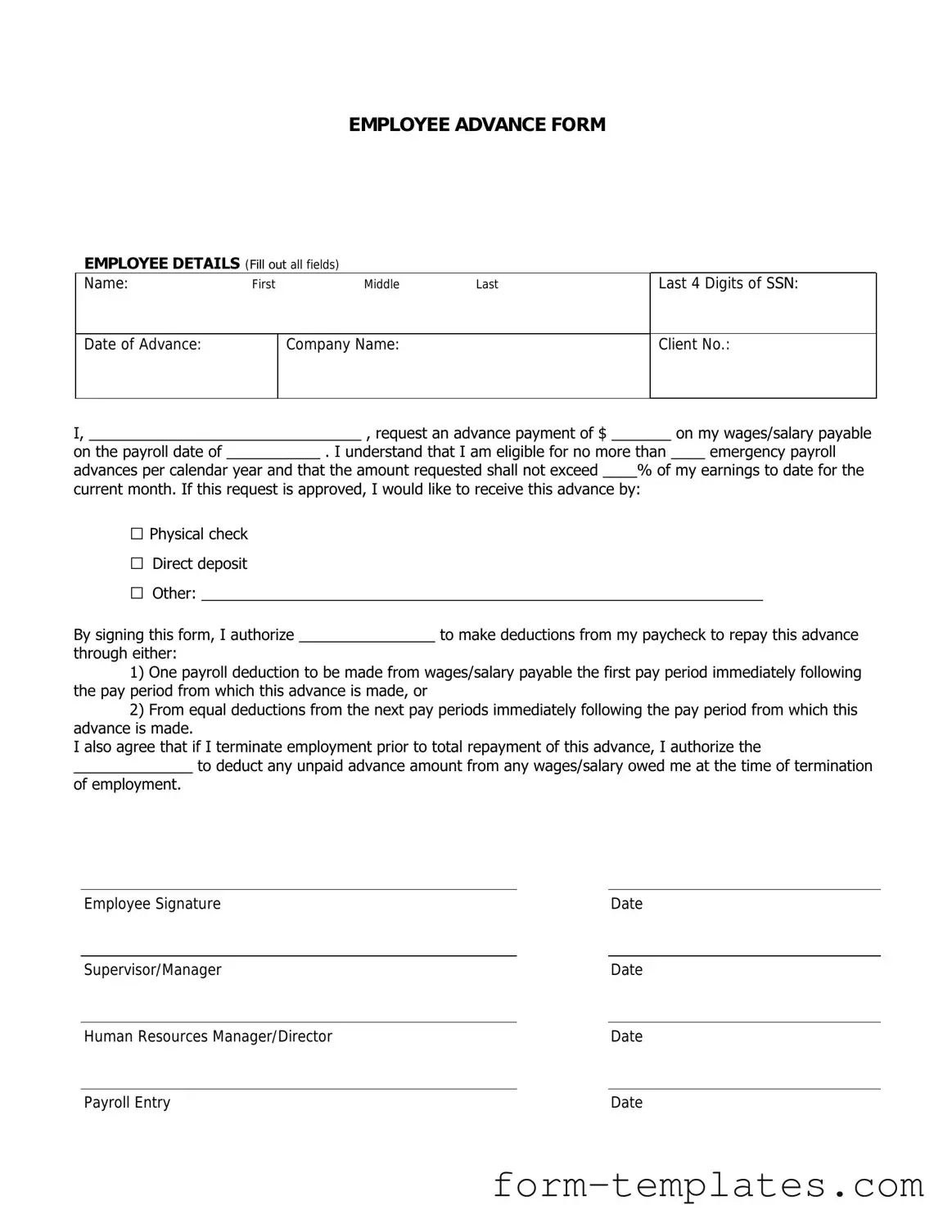The Employee Advance form is a document that employees use to request an advance on their salary or wages. This advance can help cover unexpected expenses or emergencies before the regular payday. The form typically requires details about the amount requested and the reason for the advance.
Who is eligible to request an advance?
Generally, all employees who have been with the company for a specific period may be eligible to request an advance. However, eligibility criteria can vary by organization. It's important to check your company’s policy regarding employee advances to ensure you meet the requirements.
To complete the Employee Advance form, follow these steps:
-
Provide your personal information, including your name, employee ID, and department.
-
Specify the amount of the advance you are requesting.
-
Explain the reason for your request clearly and concisely.
-
Sign and date the form to certify that the information is accurate.
Make sure to review your submission for any errors before handing it in.
Once you submit the Employee Advance form, it typically goes through an approval process. Your supervisor or HR department will review your request. You may receive a response within a few days, depending on your company's procedures.
How will I receive the advance amount?
The advance amount is usually provided through your next paycheck or as a separate payment, depending on company policy. Be sure to clarify this with your HR department when you submit your request.
Are there any repayment terms for the advance?
Yes, most companies require employees to repay the advance through deductions from future paychecks. The repayment terms, including the schedule and amount deducted, should be outlined in your company’s policy. It’s essential to understand these terms before accepting the advance.
Can I request an advance more than once?
Many organizations allow multiple requests for advances, but this often depends on the specific policies in place. Frequent requests may raise concerns, so it’s advisable to discuss your situation with HR if you find yourself needing advances regularly.
What if my advance request is denied?
If your advance request is denied, you should receive an explanation as to why. Common reasons include insufficient eligibility or lack of funds. If you believe your request was unjustly denied, consider discussing it with your supervisor or HR department for further clarification or to explore alternative options.

